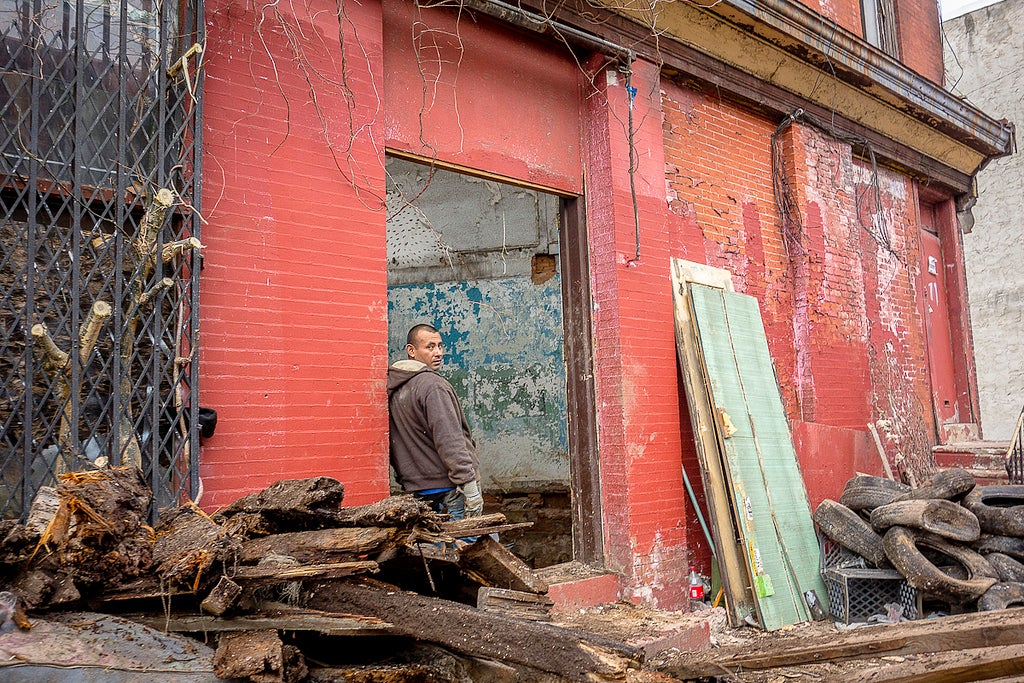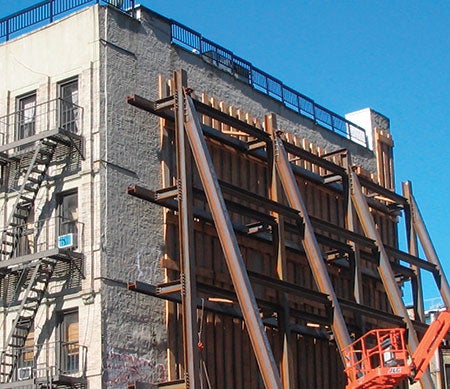Time to set explicit, minimum site safety requirements

As the dust settled after the fatal building collapse at 22nd and Market on June 5, we were left with a lot of questions about how the city inspects and permits demolition work and the minimum qualifications to be a demolition contractor.
Two other questions linger in my mind: Why wasn’t that wall braced? Why weren’t the Salvation Army thrift shop and the sidewalk protected in some way?
Short answer: While the city’s building code stipulates that precautions must be taken to make sure a construction site is safe, the rules do not outline explicit site safety requirements (such as shoring or bracing) that must be used during particular construction or demolition scenarios.
That surprised me. So I put the question to L&I last week. (No response yet.) I combed through the city’s building, administrative, and construction codes and found little language that prescribed specific temporary measures for certain types of work in order to ensure the safety of workers and the public. (If anyone out there knows otherwise, please let me know.)
Temporary protections are recommended best practices and standards in the field. Other cities, most notably New York, have adopted far stricter and more specific site safety rules. For a time I worked on restoration construction projects in New York, where site safety requirements often felt arduous and perhaps overly cautious, but they were taken very seriously. Plan review and bureaucracy felt burdensome, but the Department of Buildings was intent on preventing accidents. So we complied.
It’s easy to see that Griffin Campbell’s demolition crew wasn’t using common sense much less following industry standards. Scaffolding, for example, could have been installed above the roof of the Salvation Army thrift store to protect that little building as the tall wall to its east loomed three stories above. Lateral supports could have helped hold that tall wall in place as it was more deliberately dismantled. But the city code and regulations didn’t require that Campbell’s crew install particular safeguards ahead of demolition, guided by the project’s particular conditions.
While the building collapse last Wednesday was a human tragedy, it also exposed a dire policy failure.
On Friday Mayor Nutter announced that the city is preparing new standards for demolition projects, including requirements for “a site-safety plan detailing how the contractor proposes to protect pedestrians and adjacent properties.” [Emphasis mine]
Why? Because the city’s rules lacked that level of specificity. There has been no clear baseline for site safety that clearly describes in plain English what contractors must do to safeguard the public and neighboring properties during certain kinds of construction work. We’ve been operating on faith, relying on – in the best cases – the common sense and active involvement of enlightened developers, capable design professionals, experienced contractors, cautious property owners, and attentive city inspectors.
This feels like the sort of a body count approach to public safety that led to the introduction of building and fire codes a century ago. It’s time to raise the minimum safety standards for demolition, excavation, and construction projects.
Philadelphia’s building code is based on the commonly used International Code Council (ICC) family of model codes, with some modifications to tailor the uniform code to local conditions. With regard to public and site safety our code notes that safety precautions are necessary but specific requirements are not explicitly detailed.
The code is full of statements like: “Pedestrians shall be protected during construction and demolition activities…” [EB-1401.6] or “Adjoining public and private property shall be protected from damage during construction, remodeling and demolition work. Protection must be provided for footings, foundations, party walls, chimneys, skylights and roofs.” [ICC section 3307.1] But it is skimpy on the details regarding which protection measures should be installed and when.
Several requests to L&I for comment and clarity on the city’s existing construction and demolition safety regulations and code (as well as the forthcoming revisions) sent in writing via email and reiterated in phone calls since Thursday were acknowledged but not answered.
Where Philadelphia’s code and regulations have been too silent regarding specific safeguards, other cities have solid rules that require contractors to install certain safety measures, such as shoring or bracing walls, and building scaffolding over sidewalks. We need look no further than our neighbors to the north for a strong example.
The New York City Department of Buildings has comprehensive minimum requirements for demolition and construction site safety [pdf] with specific provisions for temporary protections. New York’s rules stipulate when to employ bracing to keep weakened walls stable, underpin or shore foundation walls, build sidewalk sheds to cover and protect sidewalks, and use safety netting to keep debris from falling into the public right of way.
Here are two examples pertaining to wrecking:
- Regarding wall demolitions New York’s code states: “No section of wall with a height more than 22 times its thickness shall be permitted to stand without bracing designed by a registered design professional.” [Section 3306.9.9]
- New York City also requires sidewalk sheds to protect pedestrians “when a structure higher than 25 feet (7620 mm) is to be demolished and the horizontal distance from the top of the structure to the inside edge of the sidewalk, walkway or temporary walkway is equal to one-half or less of the height of the structure, or when a structure 25 feet (7620 mm) or less is to be demolished and a sidewalk shed is required by the commissioner as part of a safety zone…” [3307.3.1]
Another good place to crib better regulations from are the safety requirements for city-funded demolitions under the Neighborhood Transformation Initiative, as Council President Darrell Clarke and Jennifer Kates, legislative aide to Councilwoman Maria Quiñones-Sanchez, have pointed out.
It’s time to require contractors to do more to keep us safe. But the city it should not leave site safety plans entirely up to contractors, particularly for larger buildings. These plans should be designed by a licensed engineer and examined carefully by L&I. A new round of regulations should guide what actually goes into these plans.
If there is a lesson for the public from this tragedy: If you see something, say something. If a construction site doesn’t look safe, take note of the address and contact 3-1-1. The worst thing that happens is someone inspects the property and deems everything is okay. If the situation appears imminently dangerous, call 9-1-1.
If there is a lesson for city officials it’s this: Get serious and update our building regulations. Having City Council investigate demolition rules and practices is a start, and the addition of new regulations will help. I don’t care if extra measures of precaution cost a developer a few more dollars. Public safety doesn’t have a price tag.
WHYY is your source for fact-based, in-depth journalism and information. As a nonprofit organization, we rely on financial support from readers like you. Please give today.







